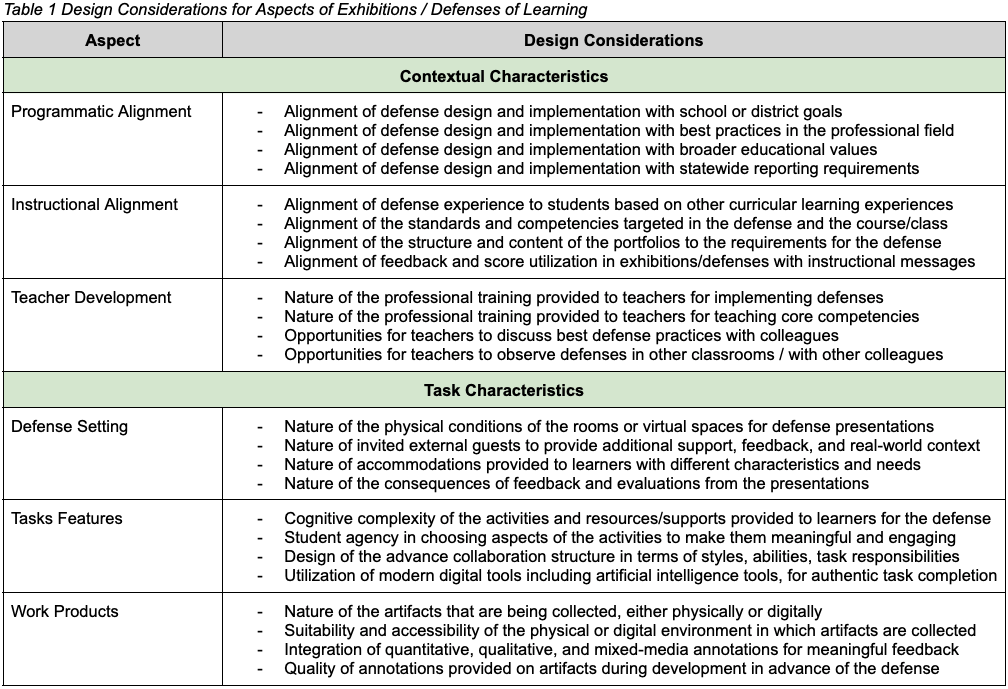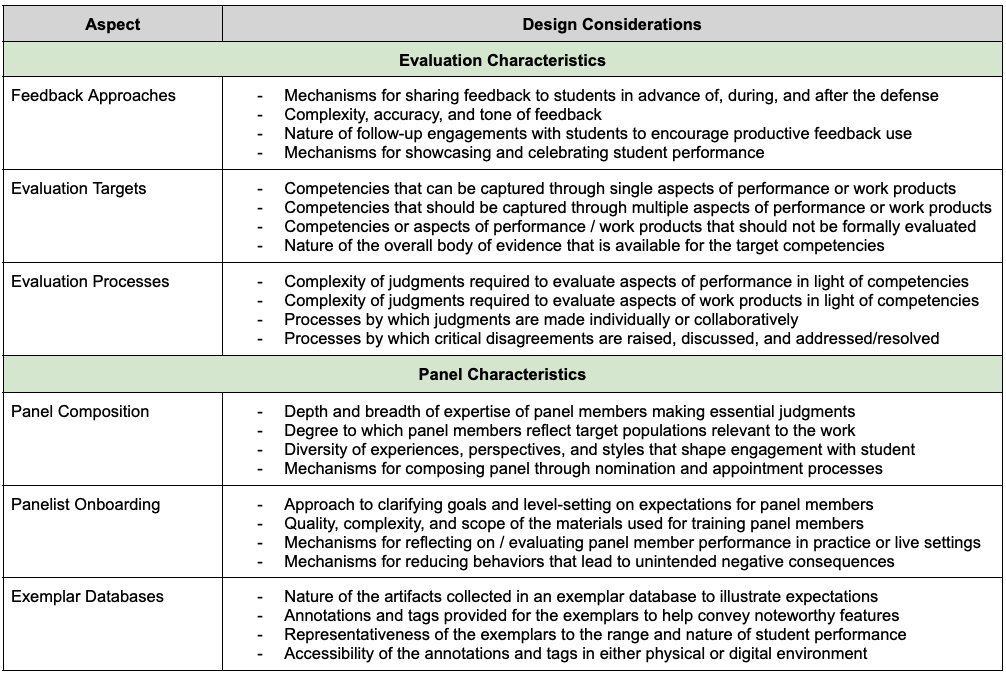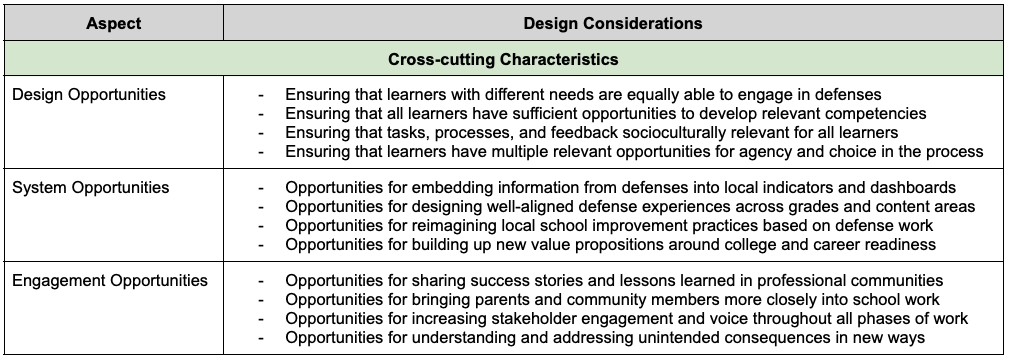
Assessment Guidance for Portraits of Learners
Design Considerations for Implementing Exhibitions of Learning
“Portraits of graduates” (or “portraits of learners” more generally) can be powerful entry points for conversation around college- and career-readiness. If they are implemented seriously, they can have numerous implications for the assessments that measure learning across K-12.
Student-led presentations to committees or panels, which are often called “exhibitions (or defenses) of learning,” are a key component of such programs. The consequences associated with these presentations vary. Some districts hold annual exhibitions of learning that are primarily designed to get students consistently engaged with the kinds of tasks, competencies, and mindsets described in their portraits. But those exhibitions might also carry higher stakes, such as promotion or graduation, in 5th, 8th, or 12th grades.
Some districts or schools engage in relationships with organizations that provide broad programmatic support in areas such as deeper learning and project-based learning, while others build their own local approaches to this work from the ground up. In some cases, multiple districts work together on such initiatives in communities of practice, which naturally leads colleagues who want to learn from others to inquire about similarities and differences for the programs overall and for events like exhibitions or defenses of learning.
Similarly, states or community leaders may want to identify unique and common implementation aspects of this work across sites in order to provide districts and schools with implementation support, to help them document their practices in systematic ways in shared resource spaces, and/or to develop mechanisms for fair evaluations of comparable evidence across sites. In such cases, a unifying framework can be helpful. It can increase the coherence of conceptual understanding and the systematic collection of information across sites.
I have included such a framework below. It lists several methodological aspects of exhibitions or defenses of learning that can be differentiated in order to catalog and critically evaluate the underlying design decisions. For each methodological aspect, four sample design considerations are listed. I placed four in each cell for simplicity, consistency, and illustrative power. The information in this framework is aligned with professional frameworks for principled design approaches, such as evidence-centered design.
The design considerations in this framework are not design decisions per se; rather, they can be thought of as representing conceptual dimensions of work that point to concrete design decisions that have either already been made or still need to be made. In this way, listing design considerations is more generative than listing specific design decisions, since many different configurations of design decisions are typically possible—sometimes even similarly defensible—in a given context.
Engaging in this kind of critical reflection is fundamentally about learning how to best characterize important implementation differences that may exist across sites in terms of core design features. There is no “correct” way to do this reflection work, so we encourage users of this framework to make it their own. That is, we encourage users to revise, remove, or add additional areas of work or design considerations as needed, to translate these considerations into process tools that colleagues can use to reflect on their work, and to discuss the insights resulting from this analysis work across school and district boundaries.



